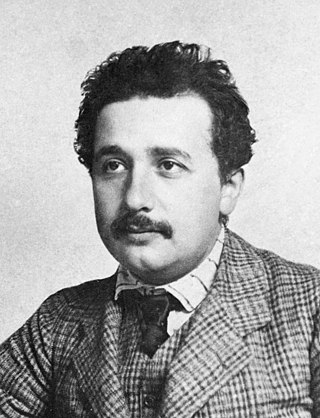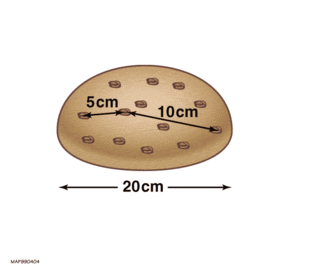
A chordate is a deuterostomal bilaterian animal belonging to the phylum Chordata. All chordates possess, at some point during their larval or adult stages, five distinctive physical characteristics (synapomorphies) that distinguish them from other taxa. These five synapomorphies are a notochord, a hollow dorsal nerve cord, an endostyle or thyroid, pharyngeal slits, and a post-anal tail.

Dinosaurs are a diverse group of reptiles of the clade Dinosauria. They first appeared during the Triassic period, between 243 and 233.23 million years ago (mya), although the exact origin and timing of the evolution of dinosaurs is a subject of active research. They became the dominant terrestrial vertebrates after the Triassic–Jurassic extinction event 201.3 mya and their dominance continued throughout the Jurassic and Cretaceous periods. The fossil record shows that birds are feathered dinosaurs, having evolved from earlier theropods during the Late Jurassic epoch, and are the only dinosaur lineage known to have survived the Cretaceous–Paleogene extinction event approximately 66 mya. Dinosaurs can therefore be divided into avian dinosaurs—birds—and the extinct non-avian dinosaurs, which are all dinosaurs other than birds.

Electric charge is a physical property of matter that causes it to experience a force when placed in an electromagnetic field. Electric charge can be positive or negative. Like charges repel each other and unlike charges attract each other. An object with no net charge is referred to as electrically neutral. Early knowledge of how charged substances interact is now called classical electrodynamics, and is still accurate for problems that do not require consideration of quantum effects.

In physics, the special theory of relativity, or special relativity for short, is a scientific theory of the relationship between space and time. In Albert Einstein's 1905 paper, On the Electrodynamics of Moving Bodies, the theory is presented as being based on just two postulates:
- The laws of physics are invariant (identical) in all inertial frames of reference. This is known as the principle of relativity.
- The speed of light in vacuum is the same for all observers, regardless of the motion of light source or observer. This is known as the principle of light constancy, or the principle of light speed invariance.

The tiger is a large cat and a member of the genus Panthera native to Asia. It has a powerful, muscular body with a large head and paws, a long tail and orange fur with black, mostly vertical stripes. It is traditionally classified into nine recent subspecies, though some recognise only two subspecies, mainland Asian tigers and the island tigers of the Sunda Islands.

Malayalam is a Dravidian language spoken in the Indian state of Kerala and the union territories of Lakshadweep and Puducherry by the Malayali people. It is one of 22 scheduled languages of India. Malayalam was designated a "Classical Language of India" in 2013. Malayalam has official language status in Kerala, Lakshadweep and Puducherry (Mahé), and is also the primary spoken language of Lakshadweep. Malayalam is spoken by 35 million people in India. Malayalam is also spoken by linguistic minorities in the neighbouring states; with a significant number of speakers in the Kodagu and Dakshina Kannada districts of Karnataka, and Kanyakumari, Coimbatore and Nilgiris district of Tamil Nadu. It is also spoken by the Malayali Diaspora worldwide, especially in the Persian Gulf countries, due to the large populations of Malayali expatriates there. They are a significant population in each city in India including Mumbai, Bengaluru, Chennai, Delhi, Hyderabad etc.

Hubble's law, also known as the Hubble–Lemaître law, is the observation in physical cosmology that galaxies are moving away from Earth at speeds proportional to their distance. In other words, the farther a galaxy is from the Earth, the faster it moves away. A galaxy's recessional velocity is typically determined by measuring its redshift, a shift in the frequency of light emitted by the galaxy.

Modern English is written with a Latin-script alphabet consisting of 26 letters, with each having both uppercase and lowercase forms. The word alphabet is a compound of alpha and beta, the names of the first two letters in the Greek alphabet. Old English was first written down using the Latin alphabet during the 7th century. During the centuries that followed, various letters entered or fell out of use. By the 16th century, the present set of 26 letters had largely stabilised:
Birbalomys is an extinct genus of rodent from Asia.

The Battle of Chingleput was a short siege in early 1752, during the Second Carnatic War. About 700 East India Company recruits and sepoys under the command of Robert Clive captured the fortress of Chingleput, near Madras, defended by a French East India Company garrison of about 40 Europeans and 500 troops.

Classical mechanics is a physical theory describing the motion of objects such as projectiles, parts of machinery, spacecraft, planets, stars, and galaxies. The development of classical mechanics involved substantial change in the methods and philosophy of physics. The qualifier classical distinguishes this type of mechanics from physics developed after the revolutions in physics of the early 20th century, all of which revealed limitations in classical mechanics.

Cladotheria is a clade of mammals. It contains modern therian mammals and several extinct groups, such as the "dryolestoids", amphitheriids and peramurids. The clade was named in 1975 by Malcolm McKenna. In 2002, it was defined as a node-based taxon containing "the common ancestor of dryolestids and living therians, plus all its descendants". A different, stem-based definition was given in 2013, in which Cladotheria contains all taxa that are closer to Mus musculus than to the "symmetrodont" Spalacotherium tricuspidens.
Notoemys is an extinct genus of platychelyid turtle known from the Late Jurassic and Early Cretaceous of the Americas.
Larachelus is an extinct genus of xinjiangchelyid turtle known from the Early Cretaceous of Spain.

The Ye Olde Mitre is a Grade II listed public house at 1 Ely Court, Ely Place, Holborn, London EC1N 6SJ.
Tropicos is an online botanical database containing taxonomic information on plants, mainly from the Neotropical realm. It is maintained by the Missouri Botanical Garden and was established in 1982. The database contains images and taxonomical and bibliographical data on more than 4.2 million herbarium specimens. In addition, it contains data on over 49,000 scientific publications. The database can be queried in English, French, and Spanish. The oldest records in the database go back to 1703.
Marau Wawa is an extinct language once spoken on Marau Island, off Makira in the Solomon Islands. The last speaker was old in 1919; the island had been abandoned after a raid some years earlier. The language may have been one of the Makira languages, but it was quite distinct.
Hadriania or Hadrianeia was a town of ancient Mysia. It was the seat of a bishop from an early date. No longer a residential see, it remains a titular see of the Roman Catholic Church.
Sangarus or Sangaros was a town of ancient Bithynia near the shore of the Propontis. In the 4th century, an early Christian sect, the Novatianists, held a synod here. Yitzhak ha-Sangari may have been a native.
Conana or Konana was an inland town of ancient Pisidia inhabited during Hellenistic, Roman, and Byzantine times. The town may also have been called Justinianopolis or Ioustinianoupolis (Ἰουστινιανούπολις). The town was a bishopric in early days of Christianity; no longer the seat of a residential bishop, it remains a titular see of the Roman Catholic Church.











